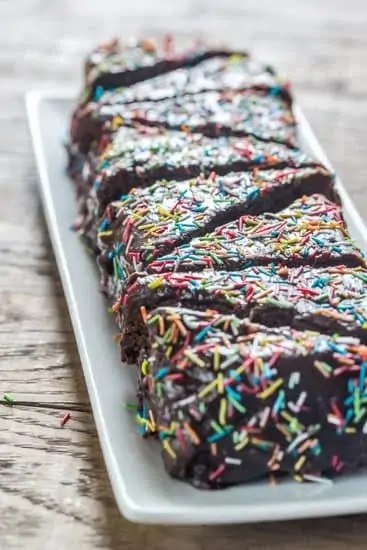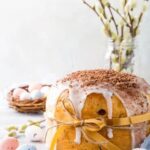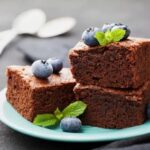Cake flower decorations have become increasingly popular in the world of baking and confectionery. The use of flowers as a decorative element on cakes is not only visually stunning but also adds a touch of elegance and sophistication.
In recent years, there has been a growing trend in incorporating floral designs into cake decorations, making it a sought-after skill for both professional bakers and home enthusiasts. This article will explore the history, types, techniques, dos and don’ts, preservation methods, alternatives, and inspiration for cake flower decorations.
The art of decorating cakes has always held significance as it showcases the creativity and skill of the baker. However, the use of floral designs has gained traction in recent years as a way to elevate cake decorations to new heights. From simple buttercream flowers to intricate fondant creations, flowers have become an essential component in enhancing the aesthetic appeal of cakes.
Looking back at the origins of using flowers for cake decorations provides insight into how this practice has evolved over time. Furthermore, understanding the different types of edible flowers that can be used for cake decorations is crucial. This article will also provide tips on where to find these flowers and how to incorporate them safely into cake designs to achieve visually stunning results.
History of Cake Flower Decorations
The tradition of adorning cakes with beautiful and intricate decorations has been around for centuries. One of the most timeless and elegant methods of cake decoration is the use of flowers. The history of using flowers for cake decorations dates back to ancient civilizations, where blooms were used not only for their aesthetic appeal but also for their symbolic significance. Over time, this practice has evolved, incorporating different techniques and a wider variety of floral options.
In ancient Rome, flowers were used to decorate cakes for special occasions such as weddings and religious ceremonies. Roses, violets, and marigolds were among the most popular choices due to their availability and vibrant colors. These floral decorations carried a deep meaning, symbolizing love, fertility, and good fortune. As the art of baking and cake decorating spread throughout Europe during the Renaissance period, the use of edible flowers for cake decorations became more refined and elaborate.
During the Victorian era in England, there was a resurgence in the popularity of flower decorations on cakes. Elaborate sugar flowers became fashionable among the upper class, as they were seen as a symbol of wealth and sophistication.
This marked a shift from using fresh flowers to using meticulously crafted sugar replicas that could be preserved indefinitely. Today, this tradition continues to thrive as modern bakers find innovative ways to incorporate both fresh and edible sugared flowers into their cake designs.
- The ancient origins of using flowers for cake decorations
- The evolution of floral cake decorations over time
- The resurgence of flower decorations on cakes during the Victorian era
Types of Edible Flowers for Cake Decorations
Edible flowers add a touch of natural beauty and elegance to cake decorations. When selecting edible flowers for cake decorations, it is essential to choose flowers that are safe for consumption and free from pesticides or other harmful chemicals. There are several types of edible flowers that are commonly used for cake decorations, each adding a unique flavor and visual appeal to the dessert.
Some popular options for edible flowers include roses, violets, lavender, elderflower, pansies, and chamomile. These flowers not only enhance the aesthetic appeal of the cake but also provide subtle floral notes that complement the overall flavor of the dessert. It is important to note that only organic or pesticide-free edible flowers should be used for cake decorations to ensure the safety of those consuming the cake.
When sourcing edible flowers for cake decorations, it is recommended to purchase them from reputable suppliers who specialize in providing food-grade edible flowers. Alternatively, if you have a garden with edible flowers, make sure they have not been treated with any harmful chemicals before using them for cake decorations. Carefully rinse the flowers before use to remove any dirt or debris.
Incorporating edible flowers into cake designs requires some careful consideration and creativity. Whether using whole blooms as a decorative element or incorporating petals into frosting or glazes, there are various techniques to achieve stunning floral designs on cakes. By selecting the right types of edible flowers and using them appropriately, bakers can elevate their cake decorations with beautiful and safe floral elements.
Techniques for Incorporating Flowers Into Cake Decorations
When it comes to incorporating flowers into cake decorations, there are various methods that can be used to achieve stunning and visually appealing designs. One popular technique is to carefully place whole or fresh flower petals onto the surface of the cake.
This method creates a natural and charming look, perfect for adding a touch of elegance to any cake. Another technique involves crystallizing edible flowers with sugar, transforming them into beautiful and eye-catching decorations that not only look great but also add an additional layer of sweetness to the cake.
For those looking for a more intricate approach, creating delicate flower arrangements from gum paste or fondant is a popular choice. These edible mediums allow for the crafting of intricate and detailed floral designs that can be customized to fit any cake style or theme. Additionally, using edible food coloring or airbrushing techniques can bring vibrancy and depth to these handmade floral elements, making them stand out as focal points of the overall cake design.
Lastly, another innovative method for incorporating flowers into cake decorations is by infusing floral flavors into the cake itself. By using ingredients such as rose water, lavender essence, or citrus blossom extracts in the cake batter or frosting, bakers can create a delightful sensory experience that complements the visual beauty of the floral decorations on top. These flavor-infused cakes enhance the overall aesthetic and appeal of using flowers as a decorative element.
| Edible Flowers | Common Uses |
|---|---|
| Roses | Decorative petal placement, crystallized decoration |
| Lavender | Gum paste/fondant flower crafting, flavor infusion |
| Violets | Sugar crystallization, whole floral arrangement |
Incorporating these various techniques allows for endless creativity in designing cakes with beautiful flower decorations while ensuring their safety for consumption. Mastering these methods opens up numerous possibilities for creating cakes that are not only visually stunning but also deliciously memorable.
Dos and Don’ts of Using Flowers for Cake Decorations
Do: Choose Edible Flowers Carefully
When selecting flowers for cake decorations, it is essential to ensure that they are safe for consumption. Some popular edible flowers that are commonly used for cake decorations include roses, violets, pansies, and lavender. However, it is crucial to research each type of flower before using it on a cake to avoid any potential health risks. It is also advisable to purchase organic or pesticide-free flowers to guarantee their safety.
Don’t: Use Non-Edible Flowers
One of the most important don’ts when using flowers for cake decorations is to never use non-edible flowers. Many varieties of flowers are toxic and can cause harm if ingested. It’s essential to steer clear of flowers that have been treated with pesticides or other chemicals, as these can be harmful if consumed. Always double-check the safety and edibility of flowers before using them on a cake.
Do: Clean and Prepare Flowers Properly
Before incorporating flowers into cake decorations, it’s important to clean and prepare them properly. This involves removing any unwanted parts such as stems, leaves, or pollen that may not be safe for consumption. Additionally, it’s essential to wash the flowers thoroughly under running water to remove any potential contaminants.
These dos and don’ts serve as guidelines when using flower decorations for cakes and should always be taken into consideration when incorporating floral designs into your baked creations. By following these best practices, you can ensure not only a visually stunning cake but also one that is safe for consumption. Whether using fresh or alternative flower decoration methods on your cakes, keeping these tips in mind will help you achieve beautiful and safe floral cake decorations every time.
Best Practices for Preserving Fresh Flowers on Cakes
The use of fresh flowers for cake decorations has become increasingly popular, adding a touch of natural beauty and elegance to various celebratory desserts. However, it is essential to ensure that these flowers are incorporated onto the cakes safely and preserved properly to maintain their freshness and appeal. Here are some best practices for preserving fresh flowers on cakes to create stunning and safe floral designs.
Tips for Preserving Fresh Flowers
When using fresh flowers for cake decorations, it is crucial to select non-toxic and pesticide-free blooms. It is recommended to source flowers from reputable florists or organic suppliers to ensure their safety for consumption. Additionally, the flowers should be stored in a cool, well-ventilated area before being placed on the cake. To keep them fresh, they can be placed in a water-filled container or wrapped in damp paper towels until ready to use.
Ensuring Safe Consumption
To make sure that the fresh flowers used for cake decorations are safe for consumption, it is vital to confirm their edible status with a florist or professional before incorporating them into the cake design. Furthermore, any part of the flower that may come into contact with the cake should be free from pesticides or other harmful substances. By following these precautions, you can guarantee that the floral decorations not only look beautiful but are also safe to eat.
Proper Placement and Removal
When placing fresh flowers on a cake, it is important to insert them securely but gently into the frosting or icing without directly touching the cake itself. This ensures that there is no cross-contamination between the flowers and the edible portion of the dessert. After your event has concluded, promptly remove any leftover flowers from the cake before storing it properly in order to prevent wilting or contamination of leftovers if consumed at a later time.
Alternative Flower Decoration Methods for Cakes
When it comes to decorating cakes, using fresh flowers may not always be practical or feasible. Luckily, there are alternative methods for achieving beautiful floral designs on cakes without relying on fresh flowers. One popular option is using edible flower decorations made from materials such as fondant or gum paste. These can be shaped and colored to resemble real flowers, adding a touch of elegance to any cake.
Another creative method for achieving floral designs on cakes is by using buttercream frosting to create flower petals and other floral elements. This allows for intricate and detailed designs that can be customized to match the theme or color scheme of the cake. Additionally, edible printed wafer paper can be used to create realistic floral decorations that are both beautiful and safe for consumption.
For those looking for a unique and innovative approach to cake flower decorations, consider using sculpted sugar flowers. These delicate and intricate creations are made entirely from sugar and can be shaped into various types of flowers, providing an elegant and long-lasting decoration for any cake.
These alternative flower decoration methods offer endless possibilities for creating stunning floral designs on cakes while ensuring that the decorations are both safe to consume and visually appealing.
| Flower Decoration Method | Description |
|---|---|
| Edible Flower Decorations Made from Fondant or Gum Paste | Shaped and colored to resemble real flowers, adding elegance |
| Buttercream Frosting Floral Designs | Allows for detailed customization to match the cake theme or color scheme |
| Sculpted Sugar Flowers | Elegant, delicate creations made entirely from sugar |
Inspiration for Cake Flower Decorations
When it comes to cake decorations, floral designs have become increasingly popular in recent years. The natural beauty and variety of flowers make them a versatile and stunning choice for adorning cakes for any occasion. Whether it’s a wedding, birthday, or other special event, cake flower decorations can add a touch of elegance and sophistication to any dessert.
If you’re looking for inspiration for incorporating floral designs into your cake decorating repertoire, look no further than these stunning examples:
- A classic white wedding cake adorned with cascading sugar roses and delicate edible orchids
- A vibrant and colorful birthday cake featuring an array of fresh, seasonal flowers such as daisies, sunflowers, and tulips
- An elegant tiered cake embellished with intricate icing peonies and buttercream blossoms
These examples showcase the endless possibilities for using flowers as a focal point in cake decorations. Whether you prefer the simplicity of a single bloom or the lush abundance of a floral cascade, there are endless ways to incorporate flowers into your cake designs.
For those looking to create their own floral cake masterpieces, finding inspiration is key. Consider exploring floral arrangements, botanical illustrations, or even taking a walk through a garden for ideas on color combinations and arrangements. By harnessing the natural beauty of flowers, you can create show-stopping cakes that are sure to impress.
Additionally, social media platforms such as Pinterest and Instagram are treasure troves of inspiration for floral cake designs. With countless photos and tutorials from talented bakers and decorators around the world, you’ll never run out of ideas for incorporating flowers into your next cake creation. Whether you’re a novice baker or an experienced professional, there’s always something new to discover when it comes to creating stunning floral cake decorations.
Conclusion
In conclusion, it is evident that cake flower decorations have a long and rich history, and they continue to be a popular choice for adding beauty and elegance to cakes. As the trend of using floral designs for cake decorations continues to rise, it is important to recognize the versatility and stunning visual impact that flowers can bring to any cake. Whether using fresh edible flowers or alternative methods, there are numerous ways to achieve gorgeous floral designs on cakes.
When it comes to using fresh flowers for cake decorations, it is crucial to be mindful of where the flowers come from and how they are incorporated into the design. By following best practices for preserving fresh flowers on cakes and ensuring that they are safe for consumption, bakers and decorators can create stunning works of art while prioritizing food safety.
As we conclude this exploration of cake flower decorations, I hope that readers are inspired to get creative and experiment with their own floral cake designs. Whether drawing inspiration from nature or seeking innovative techniques, the beauty of floral designs on cakes offers endless possibilities for creating showstopping desserts. So go ahead, let your imagination bloom, and elevate your next cake with the timeless allure of flower decorations.
Frequently Asked Questions
What Are the Best Flowers to Decorate a Cake With?
The best flowers to decorate a cake with are edible flowers such as roses, violets, pansies, and lavender. These flowers not only add beauty but also can be safely eaten.
How to Make Decorative Flowers for Cakes?
To make decorative flowers for cakes, you can use gum paste or fondant to create realistic-looking flowers. You can also use flower-shaped cookie cutters and food coloring to create colorful blossoms.
Is It Safe to Decorate a Cake With Real Flowers?
It is safe to decorate a cake with real flowers as long as they are organic and pesticide-free. Make sure to wash the flowers thoroughly before placing them on the cake to ensure they are safe for consumption.

Welcome to our cake decorating blog! My name is Destiny Flores, and I am the proud owner of a cake decorating business named Cake Karma. Our mission is to provide delicious, beautiful cakes for all occasions. We specialize in creating custom cakes that are tailored specifically to each customer’s individual needs and tastes.





